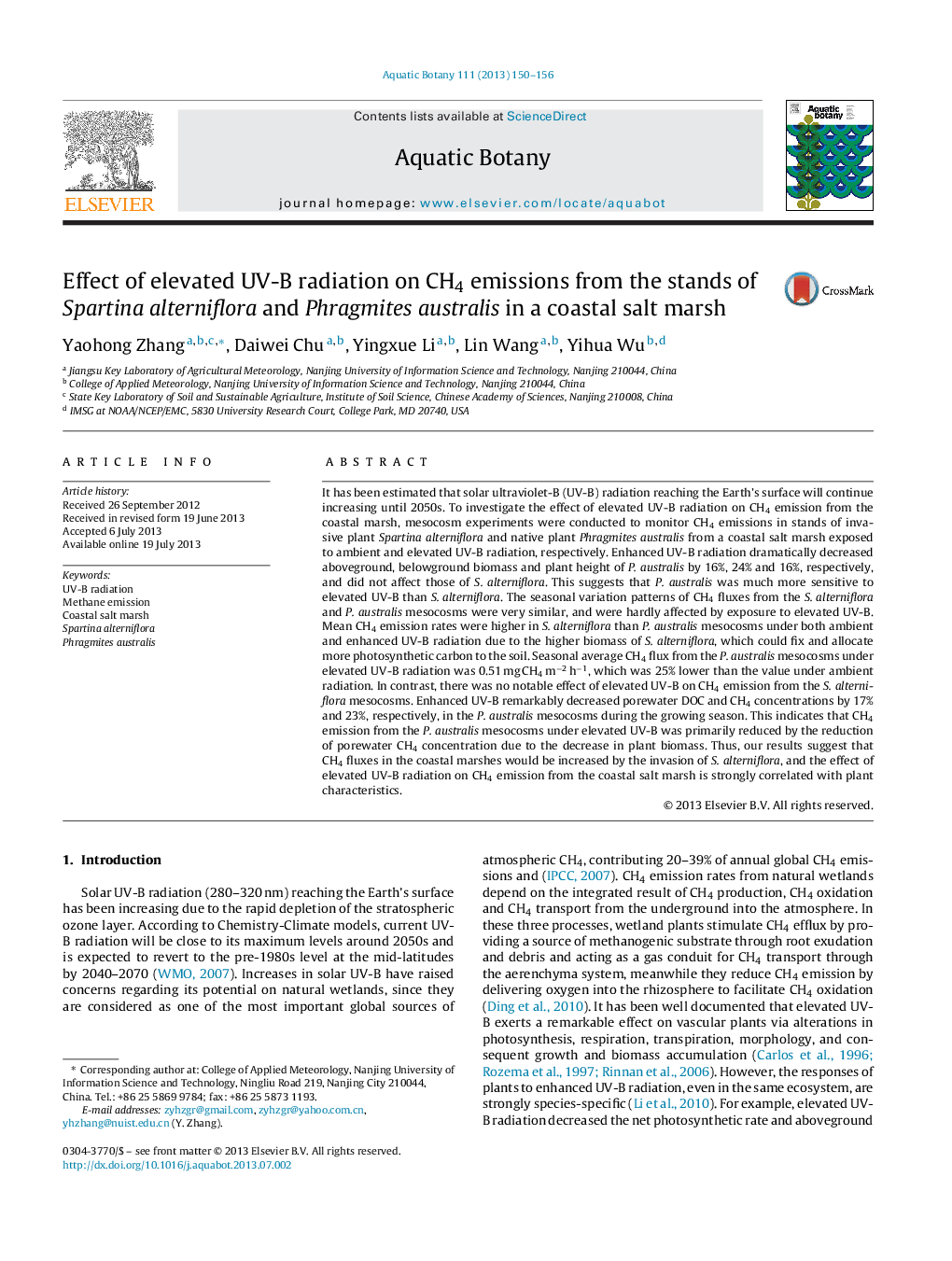| Article ID | Journal | Published Year | Pages | File Type |
|---|---|---|---|---|
| 4527860 | Aquatic Botany | 2013 | 7 Pages |
•P. australis was more sensitive to elevated UV-B than S. alterniflora.•The invasion of S. alterniflora dramatically promoted CH4 emission.•Elevated UV-B remarkably reduced CH4 flux in the P. australis mesocosms.•Reduced porewater CH4 concentration was main cause of lower CH4 emission.
It has been estimated that solar ultraviolet-B (UV-B) radiation reaching the Earth's surface will continue increasing until 2050s. To investigate the effect of elevated UV-B radiation on CH4 emission from the coastal marsh, mesocosm experiments were conducted to monitor CH4 emissions in stands of invasive plant Spartina alterniflora and native plant Phragmites australis from a coastal salt marsh exposed to ambient and elevated UV-B radiation, respectively. Enhanced UV-B radiation dramatically decreased aboveground, belowground biomass and plant height of P. australis by 16%, 24% and 16%, respectively, and did not affect those of S. alterniflora. This suggests that P. australis was much more sensitive to elevated UV-B than S. alterniflora. The seasonal variation patterns of CH4 fluxes from the S. alterniflora and P. australis mesocosms were very similar, and were hardly affected by exposure to elevated UV-B. Mean CH4 emission rates were higher in S. alterniflora than P. australis mesocosms under both ambient and enhanced UV-B radiation due to the higher biomass of S. alterniflora, which could fix and allocate more photosynthetic carbon to the soil. Seasonal average CH4 flux from the P. australis mesocosms under elevated UV-B radiation was 0.51 mg CH4 m−2 h−1, which was 25% lower than the value under ambient radiation. In contrast, there was no notable effect of elevated UV-B on CH4 emission from the S. alterniflora mesocosms. Enhanced UV-B remarkably decreased porewater DOC and CH4 concentrations by 17% and 23%, respectively, in the P. australis mesocosms during the growing season. This indicates that CH4 emission from the P. australis mesocosms under elevated UV-B was primarily reduced by the reduction of porewater CH4 concentration due to the decrease in plant biomass. Thus, our results suggest that CH4 fluxes in the coastal marshes would be increased by the invasion of S. alterniflora, and the effect of elevated UV-B radiation on CH4 emission from the coastal salt marsh is strongly correlated with plant characteristics.
